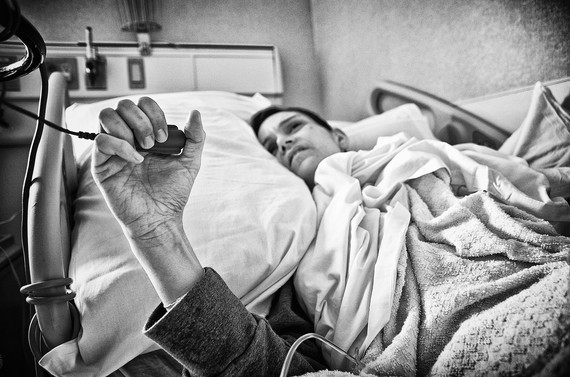Forty-two years ago, President Richard Nixon signed the National Cancer Act and vowed to make curing cancer a national crusade.
"The same kind of concentrated effort that split the atom and took man to the moon should be turned toward conquering this dread disease," said Nixon in 1971.
Many anticipated quick results, in part because of a public relations campaign complete with advertisements suggesting we could cure cancer by the bicentennial. It was this campaign that successfully pushed Nixon into supporting what came to be known as the War on Cancer.
Since then, the United States government has spent over $100 billion on cancer research.
Cancer death rates have declined and there has been long-term success in treating a few types of cancer, including lymphomas and leukemias as well as testicular cancer. Much of the progress, however, has come from cancer prevention, like people quitting smoking and women getting pap smear tests, and most cancers still kill once they metastasize. But as we become more obese, and more sedentary, that progress may prove elusive, too.
This week, Retro Report takes a look at the expectations and outcomes of the War on Cancer. Producer Jill Rosenbaum answered a few questions about the documentary.
Why did the country decide to take on cancer back in 1971?
At that time, cancer was the second leading cause of death in the United States. People were terrified of the disease and were often so embarrassed by a cancer diagnosis that they kept it secret. But, a New York Philanthropist named Mary Lasker, decided it was time for the government to mount a major effort to cure cancer. She organized a huge public relations and lobbying campaign to get Congress and President Nixon to increase research capability and funding.
Lasker's friend, Ann Landers, wrote a column in support of what came to be called the National Cancer Act. These efforts paid off, and eventually won the support of President Nixon, who had once planned to cut the budget for cancer research.
How did the press cover the story at the time? And, since?
Mary Lasker gathered committees of experts to help promote the cancer effort. Several of them had been involved in a huge breakthrough in cancer treatment--curing some patients of childhood leukemia. That success was covered in the press, and became part of her message; if we could cure childhood leukemia, we can cure other cancers.
After the first few years, as the death rate from cancer continued to rise, many in the press became more critical, and began asking whether putting so much money towards cancer research was a good idea. Since then, many have continued to ask, are we "winning" the war on cancer?
At the same time, the media has breathlessly reported many potential "breakthroughs" over the years, often prematurely. In fact, at times the press made it seem like a cure was around the corner, despite the fact that some of these reported treatments turned out to be disappointments, or even harmful to patients.
What surprised you as you reported this story?
I was really surprised to learn that, after all the money, drugs, research and effort, most of the progress we've had against cancer over the past 42 years has come from prevention, most especially smoking cessation. After years of seeing "breakthroughs" in the news, I had imagined we'd made more progress treating cancer than we have. I was also surprised to learn that the obesity epidemic now threatens to increase the rate of cancer deaths.
What is the legacy of Nixon's National Cancer Act and the so-called War on Cancer?
At the time the National Cancer Act was passed, we didn't know much about how cancer worked. Now we know that it is actually not one disease, but possibly hundreds of diseases. We have developed successful treatments for some cancers, and we've developed excellent therapies for other cancers when caught in early stages. In addition, recent discoveries have allowed the creation of so-called targeted drugs that, in a few cases, can control the aberrant cell growth that characterizes cancer. So, despite the much slower than anticipated progress, there is optimism that these new discoveries will lead to more successful treatments down the road.
It's also true that we have a long way to go. Mary Lasker's original idea was to get "medicine to the people." It took more than 25 years after the National Cancer Act was passed before the cancer death rate began to decline, and for most patients whose cancer has spread, we still can't offer long term cures.
Olivia Katrandjian is a reporter at Retro Report, which revisits major events in an attempt to provide context and understanding for news stories and current events today.
